Note: This article was amended in February 2024, after extensive research proved that the three bridges were not rebuilt in 1868 by the H. Childs & Co. Documents indicate that the bridges were rebuilt between 1888 and 1889 by the Concord Railroad. While this took away the excitement of having a piece of a Childs brothers’ bridge in my kitchen, I am nonetheless thrilled to have a piece of covered bridge history. (February 2024).
The Portsmouth and Concord Railroad was founded in 1845 to build an east-west railroad line connecting the ports of the seacoast to the capital city of Concord. The following year, a branch line from Hooksett to Suncook was granted to supply service to Suncook and surrounding towns. The line crossed the Merrimack River just above the falls and the namesake “hook” in the river.
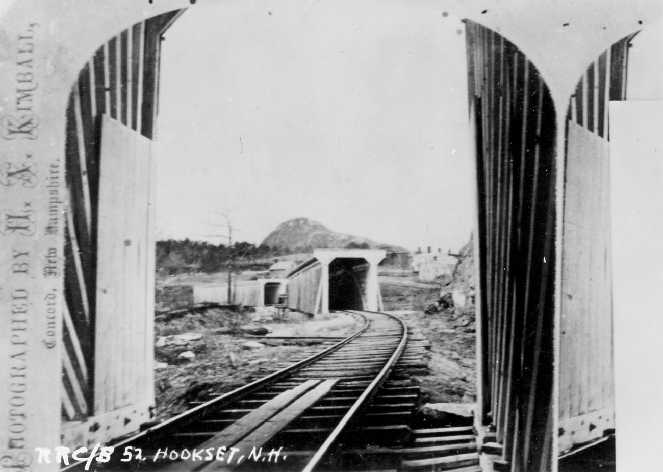
(Richard Donovan Collection)
In 1861, Cole & Company of Lake Village (Laconia) constructed three covered railroad bridges designed by Concord civil engineer John C. Briggs (1824-1865). All three bridges were built using Briggs’ truss design which would be patented in 1863 as a Briggs Triple Lattice Truss. One two-span 175′ bridge connected to an island in the river. The railroad continued past the island and to the shore over a three-span, 308′ bridge, and a two-span, 186′ bridge. These bridges were damaged by a flood in 1888 and rebuilt the same year by the Concord Railroad.
It is worth noting that some publications indicate that the bridges were rebuilt in 1868 by Horace Childs and his brothers, Enoch and Warren. However, after extensive research of H. Childs & Co, it appears that all three brothers had retired from bridge building by 1862. Further research into these bridges proved that they were rebuilt by the Concord Railroad, not the Childs, and in 1889, not 1868.
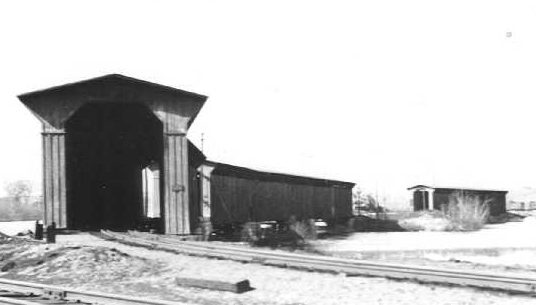
All three structures were Town truss bridges and followed the same layout as the previous covered bridges. The bridges were slightly damaged during the flood of 1927, but after a period of repairs were reopened. The final train run over the Hooksett bridges occurred on January 11, 1935. The bridges were slated to be demolished by the Boston and Maine Railroad the following year. Those plans were soon thwarted.
The winter of 1935–1936 had been a long, cold, snowy one. On March 11, following a warm front that melted a good amount of snow, it started raining. For two days, it poured over northern New England. This rainwater, combined with snow runoff, turned the rivers into raging highways full of large chunks of ice.
The following week, a second storm sat over the area from March 16 to 19. This additional four days of rain put most of New Hampshire underwater. In many places, the record water levels still stand today. The Great Flood of 1936 killed 150 New Englanders, left 430,000 people homeless, and cost between $250 and $500 million in damage. This flood caused significant damage and destruction to bridges and dams across New England.
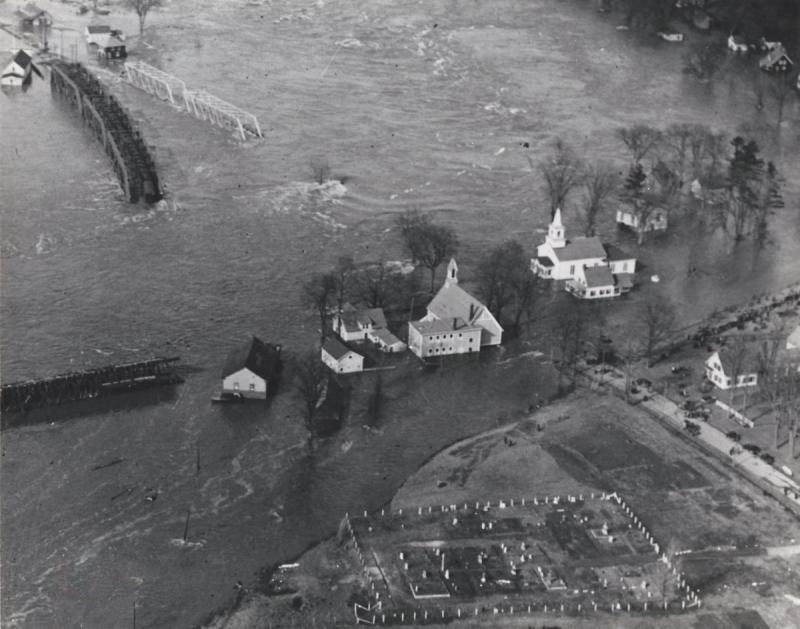
(Town of Hooksett)
Hooksett was especially hard hit. The Merrimack River was raging. An article in the Keene Evening Sentinel reported, “the main section of Hooksett, a town north of Manchester, lay in ruins. A survey indicated thirty houses and buildings had been wrecked, and several swept into the swirling Merrimack. A tenement house and a school building were included in the damaged area. The steel town bridge went out, and three wooden bridges followed… they were in shambles.” Twenty-five bridges, including the three covered railroad bridges, were destroyed.
The Town of Hooksett reported, “the bridges were washed down river over the Hooksett Falls and caused the collapse of the brick two-story Village School and the Odd Fellows Hall (on what is now Veterans’ Drive) and also damaged or destroyed several other buildings including serious damage to both the Protestant and Catholic churches.”
Meanwhile, four and a half miles south of the covered bridges, a young family was building their home. Joseph “Alfred” Hebert (b. 1898) and his wife, Aldea C. Roy (1901-1987), purchased a property in 1925 on what is now Daniel Webster Highway. Alfred was the son of Jean Baptiste Hebert (1867-1907) and Celine Helie (1873-1926), immigrants from French Canada who came to work in the mills. Alfred and Aldea married in 1920, and he supported the family as a truck driver. Their son, Roger, was born in 1922. By 1930, the Hebert’s started construction on what they referred to as their Sunday House, as that was the only day their busy work schedules allowed them time to build it.
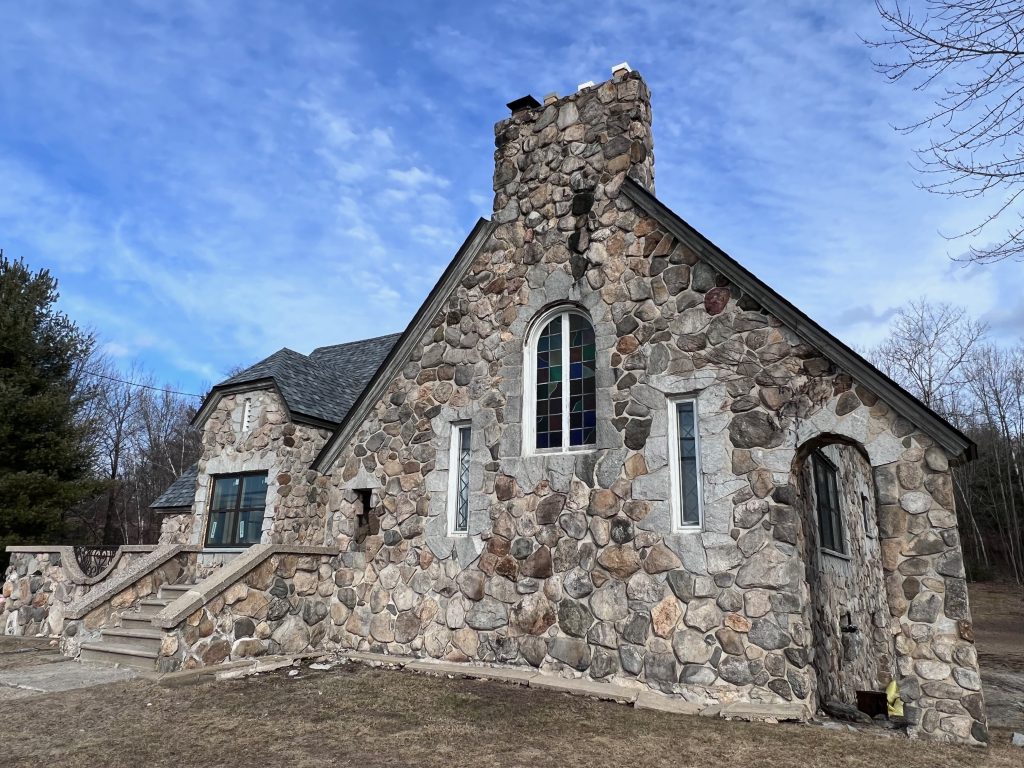
Constructed entirely of field stones harvested from the property, the home is decidedly unique. Now referred to as the Stone House, the home features a large flagstone fireplace, stained glass windows, concrete stairways, and a beautiful front porch. A date scratched into the concrete just inside the front door marks the year 1937, the same year the Heberts were operating the Green Lumber Company out of the Stone House.
Where am I going with this, and what does the house have to do with covered bridges?
Well, the Heberts were both frugal and resourceful. The house, remember, is built mainly of found stones and concrete. The ceilings are reinforced with steel from old Model-T and Studebaker cars. The walls were insulated with newspapers and other paper products. The wooden roof was also made from repurposed material.
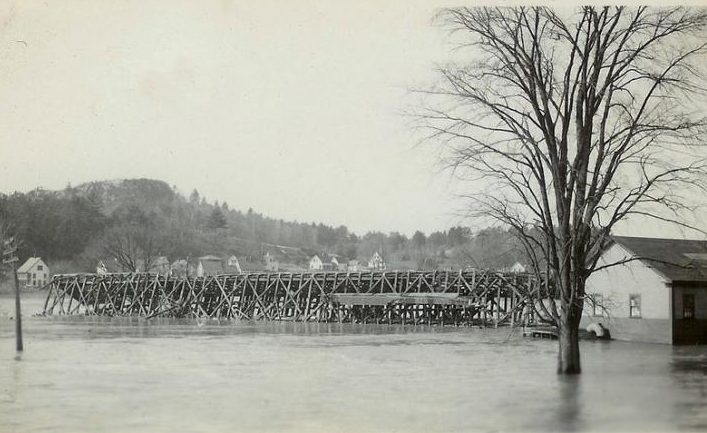
(Town of Hooksett)
In March of 1936, the hook of the Merrimack River was full of scrap wood from the three railroad bridges. Over 600 feet of covered bridges were destroyed, leaving long, three-inch thick planks of wood along the shoreline. It is reported that Alfred paid the town $20, and they let him take as much wood as he wanted. He used those timbers to put a roof on his house, and those timbers remain today.
The Stone House remained in the Hebert family and was for sale for many years. When a buyer did come along, the intention was to tear down the house and build a storage facility in its place. Townspeople were having none of that. Residents submitted a petition and asked the town to intervene to save the property. In the end, the developer changed plans, and the Stone House went back on the market. In 2021, the Stone House was purchased by Christina Katsikas.
A couple of weeks ago, Christina contacted me after watching my segment on NH Chronicle. Now in the midst of a complete renovation of the Stone House, Christina is about to insulate the property to provide an energy-efficient home. The beautiful roof rafters will soon be covered in spray-on insulation. “I’d like you to see the structure in person before we apply the foam insulation to it,” Christina said. “It breaks my heart to do that, but there’s no other way to be able to live in this stone house. If you’d like to come visit, I will show them to you before they disappear out of sight in the house,” she wrote.
That was a hard yes.
On Monday, Christina graciously showed us around her house. It is simply incredible. The house is like a small castle, seemingly out of place alongside a busy Route 3, surrounded by a flood of commercial buildings that have taken over the area. Carpenters were just as busy inside framing rooms and preparing for the next steps – drywall, plumbing, and electricity. Christina pointed out the car parts in the ceiling and the newspapers on the walls. She took us into the basement where the lumber company was once housed and showed us a built-in safe. After walking up a concrete staircase to the second floor, we saw the repurposed timbers from the 1889 covered bridges.
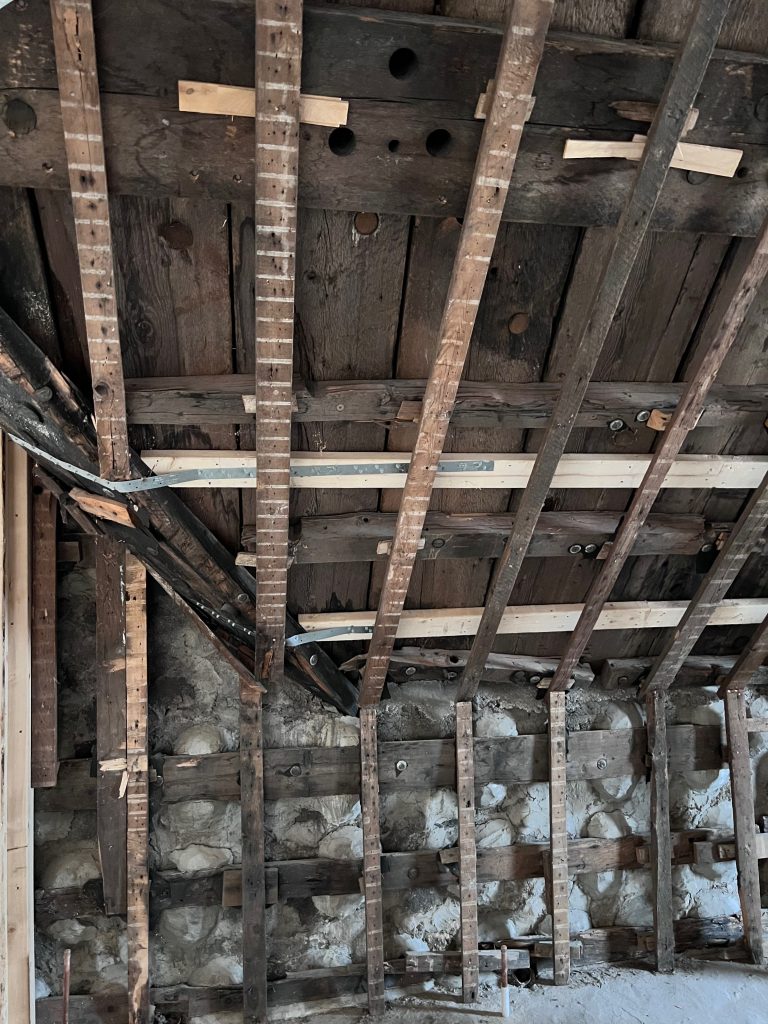
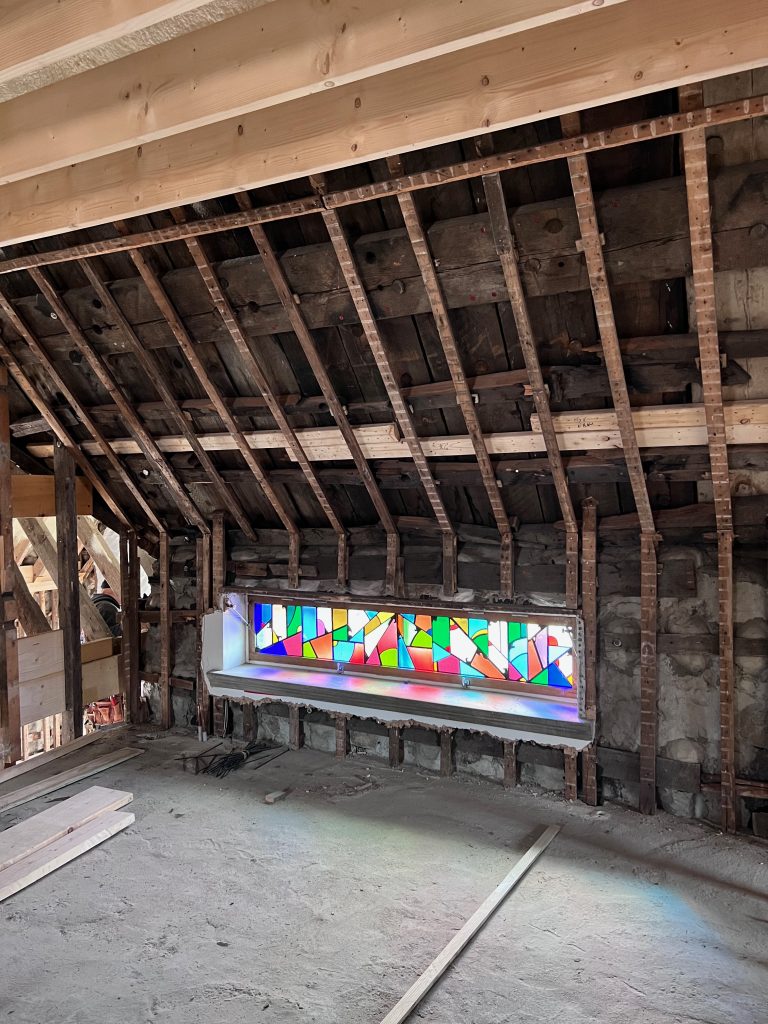
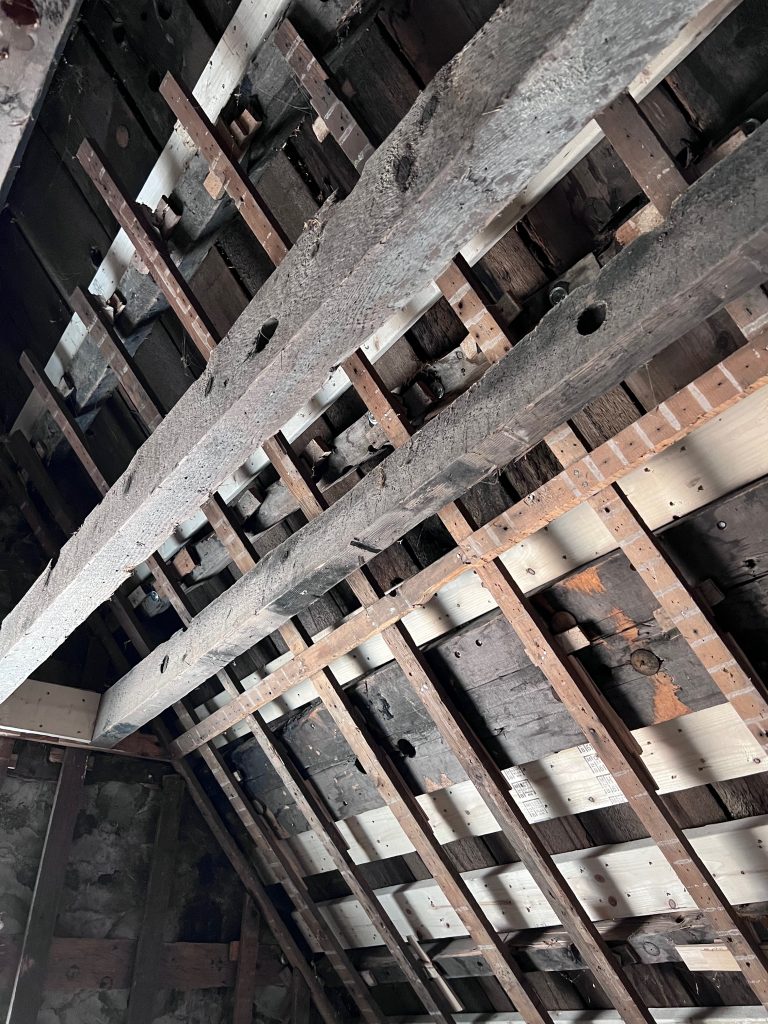
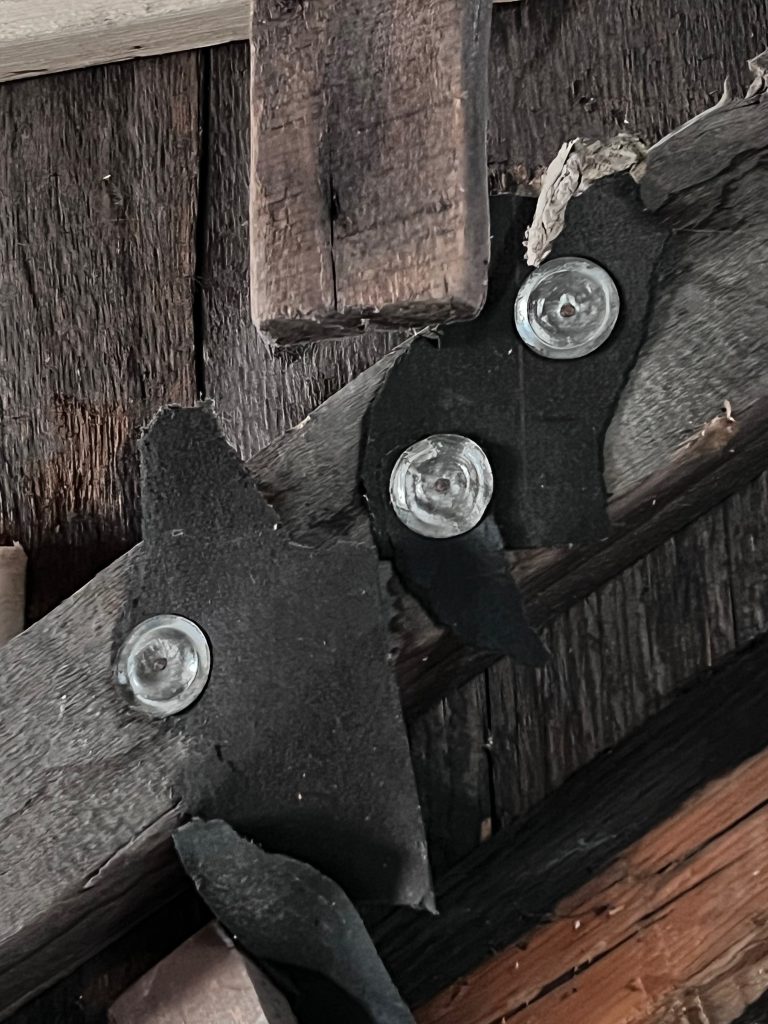
Many of the timbers still have the trunnels attached. Some have holes where the trunnels once were, and some of those holes are filled with spray foam. Several still have metal pins that once held sheets of tar paper; tiny pieces of black paper are attached to some of the pins. Many have nails sticking out every which way. But there they are, repurposed from destruction, providing shelter for the framework of this unique home. It was neat to see. Soon, the timbers will be covered up, and no one will ever see them again.
Except for one. Christina gave us a large, 6-foot timber as a keepsake. I’m unusually excited about having timber from an historic covered bridge in my kitchen. It may not be everyone’s idea of décor, but it’s my kind of cool.

References
Historical photos used with permission from Covered Spans of Yesteryear and the Town of Hooksett.
Albertson-Grove, J. 2021. “Hooksett’s Stone House gets a reprieve.” Union Leader. May 6, 2021.
Kansas City Star. 1936. “Arms Over Cities.” Kansas City Star, March 20, 1936.
Keene Evening Sentinel. 1936. “Town of Hooksett Is in Ruins.” Keene Evening Sentinel, March 20, 1936.
Knoblock, Glenn A. 2012. Historic Iron and Steel Bridges of New Hampshire and Vermont. McFarland Publishers.
Montreal Gazette. 1936. “Dead in Floods Reach 152.” Montreal Gazette, March 21, 1936.
Town of Hooksett. 2021. Scenes from Hooksett’s Past: Heritage Month Continues! http://hooksett.org Retrieved February 22, 2023.
Truax, Will. 2014. “Briggs- the Man – the Truss – The Enigma.” The Bridgewright Blog, December 2014.

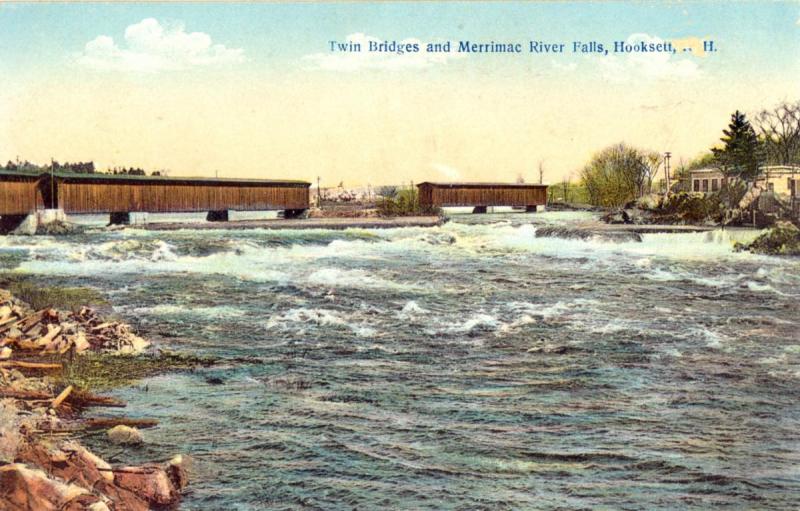
July 29, 2023
My family home withstood the flood and those bridges. We have the newspaper articles framed and on display. I love learning more about it! Great read.
July 30, 2023
Thank you, Courtney!